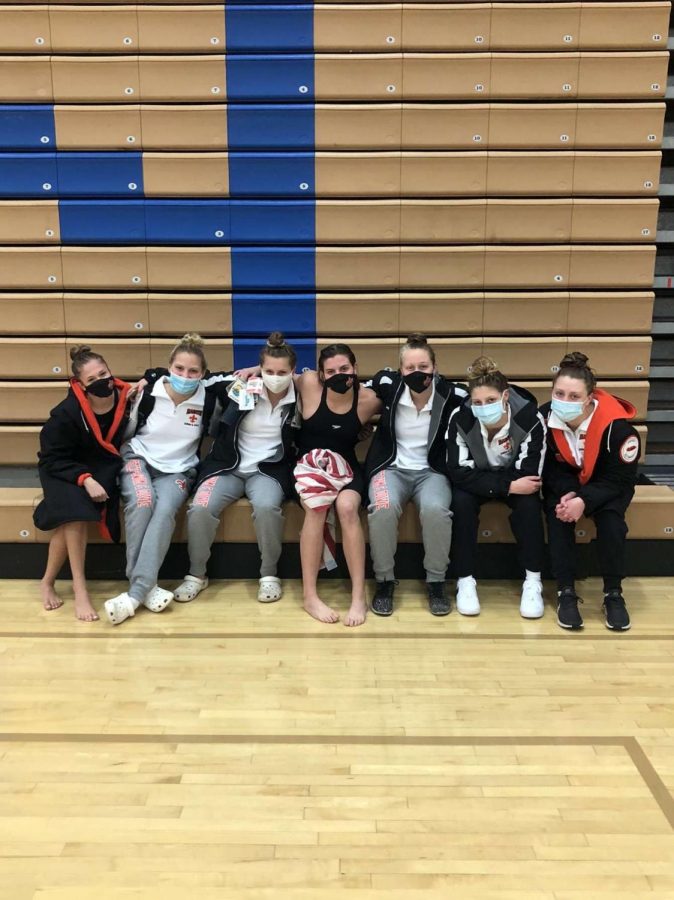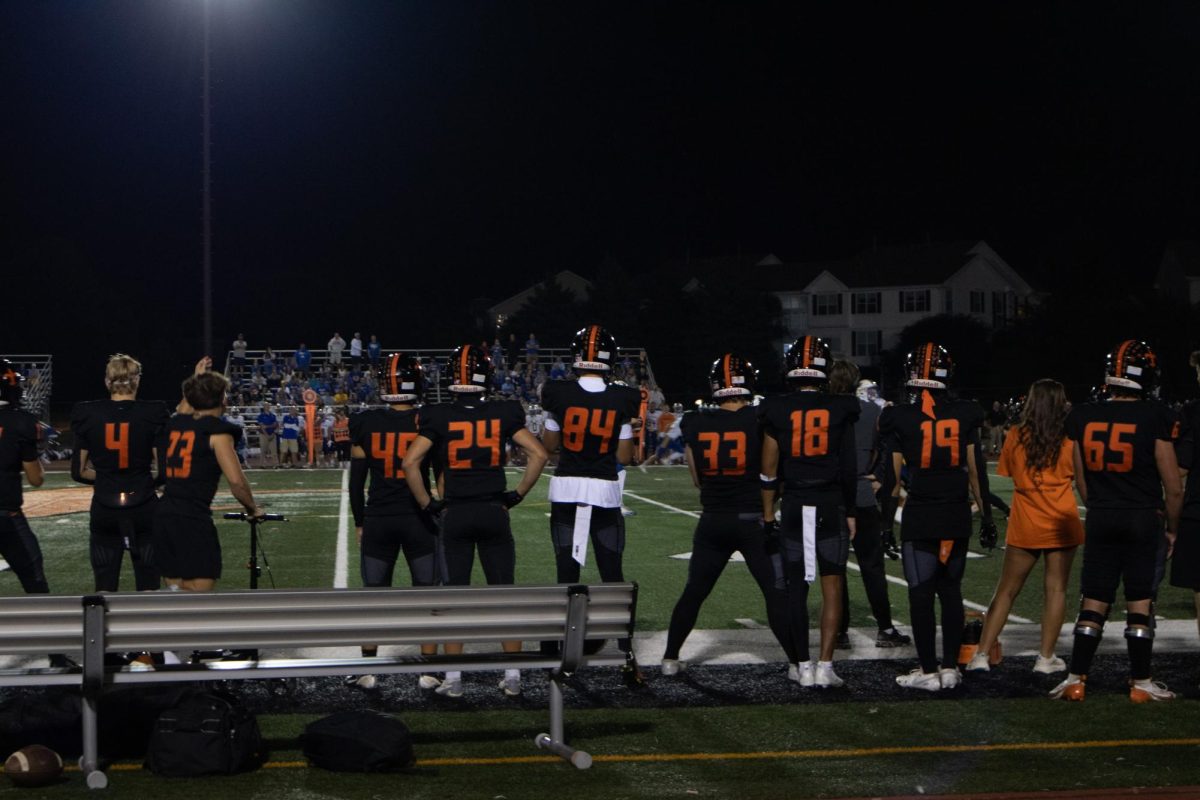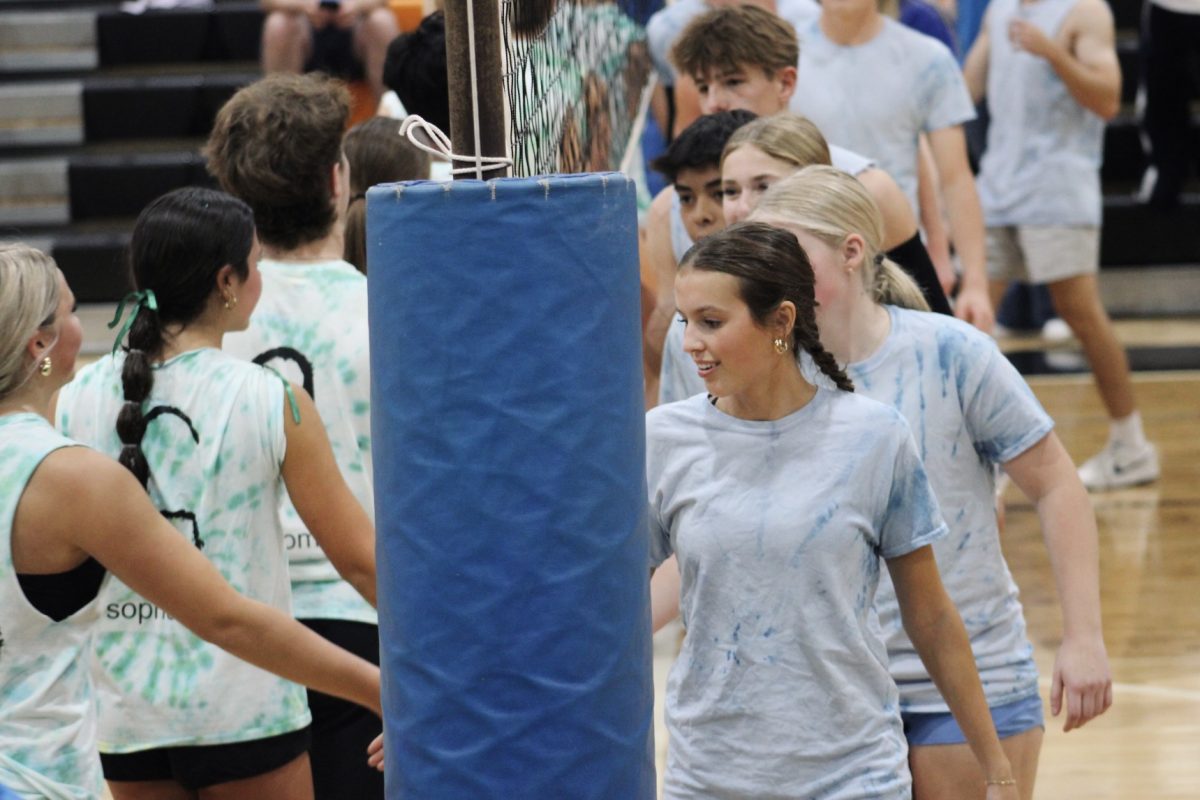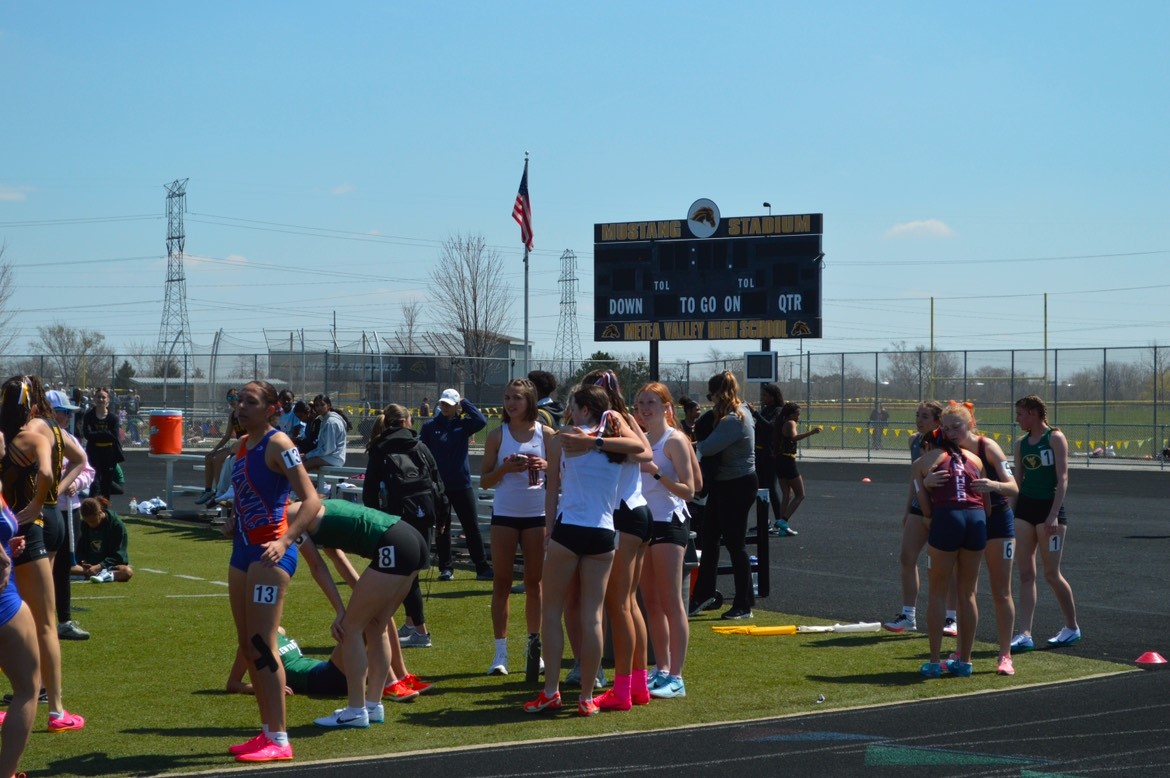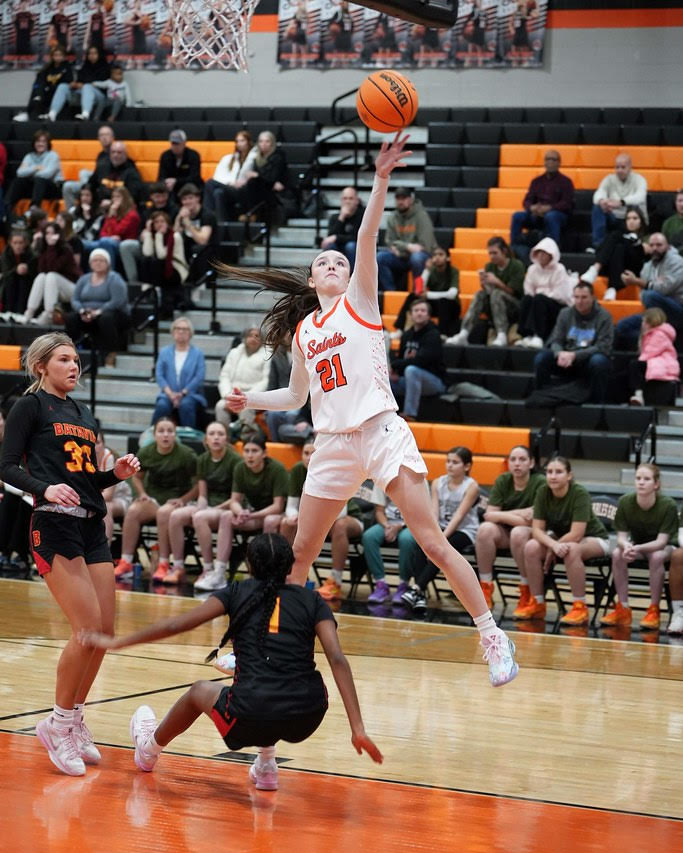Even though there was no state meet this year, East’s Girls Swim Team trained hard for their sectional competition, which was held October 24. Hosted by St. Charles North, the meet concluded a season that saw many changes brought on by the COVID-19 pandemic.
In a typical year, the sectional meet determines the swimmers who qualify for the state meet in mid-November. This season, however, sectionals was the final competition of the IHSA’s shortened fall swim season.
East’s team took second place out of the 11 teams at the meet, with a score of 204 points. St. Charles North took a narrow victory with 228 points, which won them the meet for the fifth year in a row.
As individuals, multiple Saints swam their personal best times.
Molly Yetter, a senior, took first place in the 50-yard freestyle with a time of 22.68 seconds. Teammate Lauren Swartz, also a senior, took second place in the same event with a time of 23.48 seconds.
In addition to freestyle, Swartz was also third place in the 100-yard breaststroke with a time of 1:05.80 seconds.
Senior Madison Supple swam the 500-yard freestyle in 5:08.03, which earned her third place. Supple was also third in the 200-yard freestyle.
Yetter was accompanied by her junior teammate Sophia Mruk in the rankings of the 100-yard backstroke. Yetter was third place in the event with a time of 56.79 seconds, and Mruk was close behind in fourth with a time of 57.16 seconds.
Yetter said that, overall, she was “very happy with how [she] did.”
“Like every time I race,” she said, “I felt there were things I could have done better, but overall I am happy with the result.”
Mruk volunteered a similar statement, saying that she was happy about swimming two personal bests, but that she “didn’t do quite as well as [she] wanted to.”
In the absence of a typical state competition, the IHSA did something unique with the sectional results: they combined the sectional results across the state, directly comparing the times in order to create state ranks both in individual events and for team titles.
Supple, Mruk, Swartz, and Yetter all qualified to have their times compete in this “virtual state meet.”
Yetter’s 50-freestyle time was the fastest in the state by 0.02 seconds, making her the state champion. Swartz placed 6th in the event.
Regarding her 1st place finish, Yetter said that “it feels pretty cool, and feels pretty good to have the hard training pay off.”
In the diving competition, East had two competitors in the top three spots. Katie Kempff, junior, came in first place with a score of 338.3 points. Bella Milosch, senior, came in third place with a score of 284.1 points. There were nine total divers in the diving portion of the meet.
As a team, the girls placed 10th out of a total of 82 schools in the team ranking. According to Mruk, that is the highest the team has placed in her time at East, and she is “proud of that place.”
This “virtual state,” or comparison of sectional times, brings to a close what is certainly one of the strangest sports seasons in recent history. Mruk says that a lack of any relays, as well as “not being able to get to know the team” were some drawbacks of the season affected by COVID-19.
Mruk tempered this statement with a few positives, though. “We were still able to have a season and get better … and we found our own ways to make practices fun, which made some of the negatives not seem so bad.”
Yetter said that she thinks the modifications to the season definitely changed her memories of her senior year. “A drawback was having less time with the team, and not being able to have our senior recognition meet as a whole team,” she said.
Like Mruk, though, Yetter did find some positives. “As hard as it was to navigate the season, I think it brought the seniors as a whole closer together, which made good memories.”
She also noted that “a strong benefit to a shorter season is that it is much easier to focus on your goals and what you need to do to reach them.”
Overall, the Saints were strong contenders in both the sectional and “virtual state” competitions, proving their flexibility in the midst of a pandemic that has changed sports across the country.


